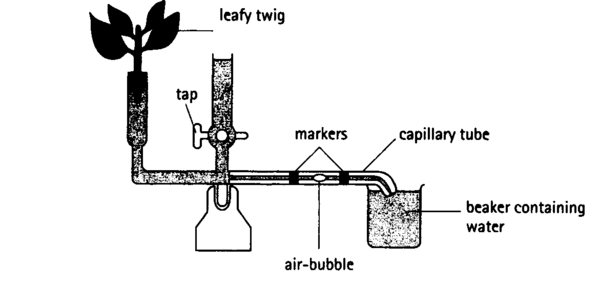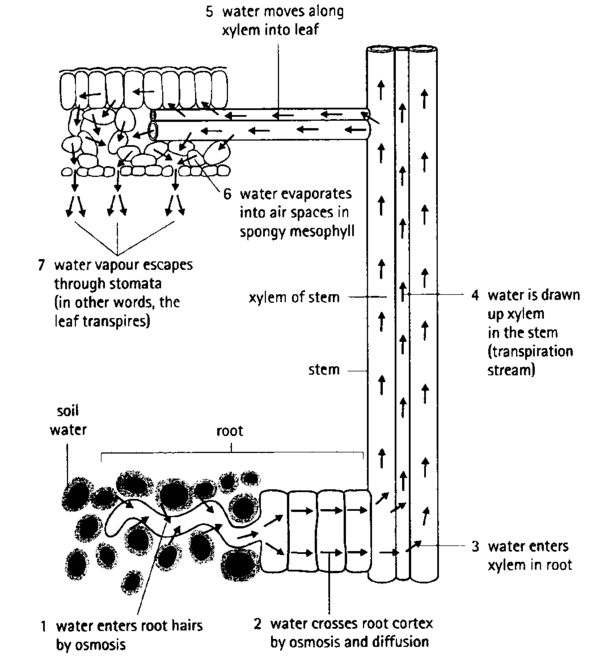| << Chapter < Page | Chapter >> Page > |
This diagram shows a potometer which is used to measure the rate of
transpiration. As the leafy twig transpires, the air bubble moves to the left.The quicker the air bubble moves the faster the leafy twig is transpiring.

Suggestion: Can we have a
graph relating to
transpiration rate over time?
Also add an arrow to show
movement of the bubble
TOWARDS the plant for
greater clarity. [clark]
The diagram below shows a summary of the movement of water from the roots to the leaf.

Plants need water to maintain turgor pressure. This helps provide support forthe plant as when a cell absorbs water the cell membrane pushes against the cell wall. The cell is now turgid. If there isn’t enough water in theplant the membrane moves away from the cell wall and the cell is now flaccid. This is when a plant begins to wilt and it will eventually die. Wilting is theloss of rigidity of the non-woody parts of plants and occurs when the turgor pressure falls towards zero. Lower water availability can results from droughtconditions, high salinity, saturated soil conditions, low temperatures or bacterial or fungal infections that affect the vascular system of the plant,
When the environment is extremely humid (moist) the rate of transpiration is very low. In some plants, the leaves secrete water onto the surface of theleaves through specialised pores called hydathodes. Hydathodes are the open ends of xylem vessels at the edges of the leaves in certain species of plantssuch as strawberries and some grasses.
A potometer measures the rate of transpiration by measuring the movement of water into a plant. The following experiment uses a simple hand madephotometer.
Aim: To assess the effect of different environmental conditions (e.g. temperature) on transpiration rate.
Apparatus
Method
Perform the following steps under water
Perform the following steps above water
Results
Discussion
Conclusion
More information about potometer experiments can be found on the following websites:

Notification Switch
Would you like to follow the 'Siyavula: life sciences grade 10' conversation and receive update notifications?